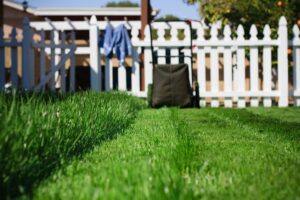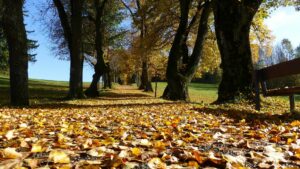Being exposed to the elements, your lawn faces a year-round battle for survival. Whether it’s the icy attack of a frost in the dead of winter, or the debilitating heat of a dry Australian summer, your lawn has to hold up against the full force of the extreme Australian climate.
The good news is, you can help give it the best shot at survival. Starting with the summer heat of January, let’s walk through the changing conditions of an Australian year, and see how you can alter your maintenance routine to give your lawn the best chance to survive and thrive.
Summer
The long dry days of summer will test the hardiest of lawns, so it’s best to irrigate if your area isn’t prone to getting much summer rain. The best time to water is either early in the morning or late in the evening, when the water won’t be instantly evaporated away. Wetting agents may be useful to help hold in the moisture.
For cool season lawns, such as ryegrass and fescue, you should ideally raise your mower’s cutting height. While 5cm will be fine for the rest of the year, in the heat of summer, cool season grasses need to be able to shade themselves and hold in more moisture – a 7cm height will help with this. The opposite goes for warm season grasses (couch, kikuyu, buffalo), which should be cut lower than usual at this time.
Autumn
Autumn is fertiliser time. The increased moisture and still-warm soil make for a perfect combination, promoting growth for both cool and warm-season lawns. Spur this growth on with a decent hit of fertiliser before the winter chill sets in. By giving your lawn a good feed, you’ll have it at its healthiest, allowing it to deal with weeds, drought, pests and diseases better.
Autumn is also the best time to sow cool season seed, whether it be in an over-seeding or new lawn capacity. This gives your cool season grass a start in its favourite growing conditions, and allows the lawn to form a solid root system before the next hot, dry summer rolls around in nine months’ time.
Winter
With the onset of winter rains, you want to ensure that your lawn is draining well. A particularly prevalent problem in clay-based soils, waterlogged backyards are a death sentence for the grass that calls them home, and unfortunately there is no easy fix. You may need to install agricultural pipes to assist with drainage, and winter is the best time of year to carry out this type of work.
For cool season grasses, dropping the mower down to 3cm or so will allow as much light and heat into the grass as possible. For warm season grasses, the winter months may force them into a hibernation period, so minimal mowing is recommended. It you do mow, keep the level high.
Spring
Once again, the bridge season of spring is an ideal time to bring out the fertiliser. After a cold winter with limited sun, your grass will be crying out for warmth and food. It’s also in your interest to get your lawn as healthy as possible before the onset of a long, hot summer.
The warmer weather can bring out the bugs, with many species coming alive in spring. Limit these invaders by spraying a preventative pesticide, and keep an eye out for infestations of beetles, millipedes and grubs.
Finally, the end of spring is the best time of year to attack built-up thatch. A small amount of thatch (dead grass runners and blades that have built up at the base of the lawn) can be good for your turf, but too much can suffocate it. Use a rake to remove accumulations when the grass begins to properly dry out in late spring.
Knowing how your grass reacts to the seasons is the first step in formulating a year-round maintenance schedule. This will depend on the grass type, and whether it is a cool or warm season variety.
If you’ve got any questions regarding the maintenance of your particular grass, be sure to consult the friendly team at Mckays.



